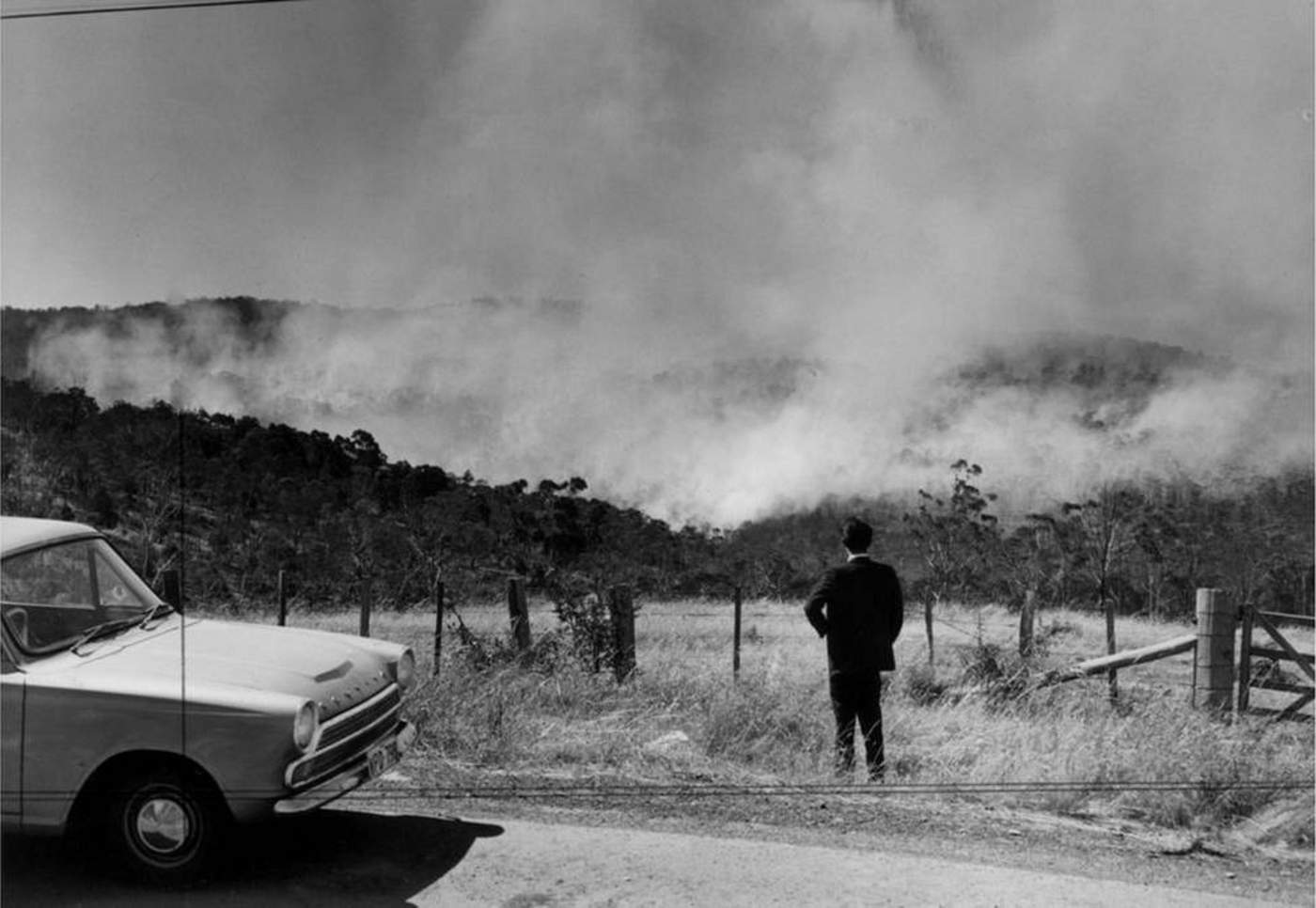On February 7, 1967 in and around Hobart it seemed as though hell had opened up.
The most deadly fires in Tasmania’s history swept through the city leaving a trail of devastation and grief.
Tuesday marks the 50th anniversary of the fires, which came to be known as Black Tuesday.

“It wasn't until a couple of days later that our parents were able to get a message to us that our properties had survived, or been burnt to the ground … word gradually filtered through from other people that so-and-so's place had been burnt to the ground."
It wasn’t until Mr Crawford went home for a weekend that the scale of the disaster hit him, leaving him “gobsmacked”.
“You saw the damage all the way from Hobart to where we lived … lots of countryside burnt, stock still lying around dead and some stock still wandering around that had to be put down, seeing the damage to a lot of the houses and parents pointing out, ‘Yep over there so-and-so died in their house’,” he said.
“To see it cover such a long distance and the damage that was done ... I was gobsmacked to think that something like that could have happened over such a large area and so quickly, in six and a half hours the damage that was done was unbelievable.”
With firefighting resources stretched beyond capacity it was left to many to face the flames on their own.
Mr Ibbott raced home after reaching his brother on the phone, finding out he was fighting to protect their home alone.
“I went through the fire at the top of Tunnel Hill and the policemen tried to stop me and I said, ‘No I’ve got to go, my young brother’s at Orielton’, then I went through the fire again at midway point,” he said.
Mr Ibbott went through the fire five or six times that day.
Fighting to protect their home, Mr Ibbott and his brother were joined by their father who had been at Penna helping a friend fight the fire.
“Dad came back, he looked absolutely terrible,” Mr Ibbott said.
“Then we had a pine hedge next to the house and that caught alight from the grass … the shearing shed, the fowl house, the fowls, the dogs had been burnt on their chains.”
As the flames took hold of their house, Mr Ibbott, his brother and father took what they could from the house.
"I put dad in the car ... gave him a drink of the lemon syrup and got him into Sorrell, sat him down outside the chemist and he was violently sick,” Mr Ibbott said.
“The chemist said, ‘What did you give him to drink?’ and I said, ‘Syrup’, and she said, ‘Oh that’s the best thing you could have done, he probably would have had a heart attack and died if you hadn’t’,” Mr Ibbott said.
But the day was not over for Mr Ibbott, who returned to try and save his sheep from the flames.
“I tried to walk up to get them and I got them half way down and then I saw the fire jump the creek … I went back to the car and I said, ‘No, I won’t sit inside’, so I put my back to the fire, lay over the bonnet and the fire went past,” he said.
“I just closed my eyes, put my hands over head and the fire went past.”
It took him 10 minutes to get his breath back after the fire passed.
“I only heard later on that at Penna two blokes were running, going down the road and a bloke coming behind in a tractor, and he was up high and the two blokes fell down dead because there was no oxygen,” Mr Ibbott said.
“When I looked back that way there was a fireball burning a few hundred feet up in the sky but the flames that were on the ground were probably about one and a half or two kilometres behind the fireball, it was burning the oxygen out of the air.”
Meanwhile at Taroona, Barbara Ibbott was fighting the fires off with her father and her father's colleague after rushing home to help him.
“The noise – it was very loud, I hadn't realised before how loud a fire is, it was a roar,” Mrs Ibbott said.
“You could look up into the sky ... it was very black but you could see these flashes like there was lightening, and you were almost ducking think it was going to get you, it was terrifying.”
They used anything they could find to battle the flames, garden hoses, buckets, wet cloths and even filled the bath.
“We just beat what we could.”
They managed to save their family home, but everything around was destroyed.
“We were exhausted and we needed some food, Dad was just about ready to collapse. I looked in the fridge and there was chops there so we took them out and put them on a toasting fork and we cooked them over one of these burning logs,” Mrs Ibbott said.
“We sat up all night listening to the radio, people doing messages you know, ‘Tell Auntie Flo I’m okay’ and, ‘I’m at Uncle Bens’ et cetera on the abc radio.”
The disaster was felt across the state, with fellow Tasmanians in the North shocked at the disaster.
“I heard the shocking news on someone's transistor radio … The next few days people around town and on the buses looked stunned as news stories of the tragedy filled The Examiner,” Jennifer Sabatino said.
Fifty years on the memories are still as poignant as ever, and the bushfire is still the worst the state has seen.








